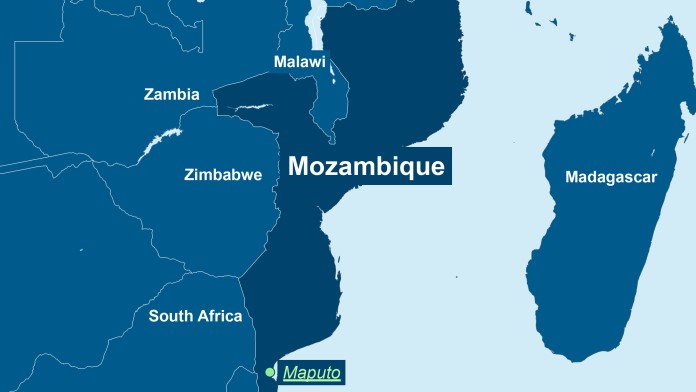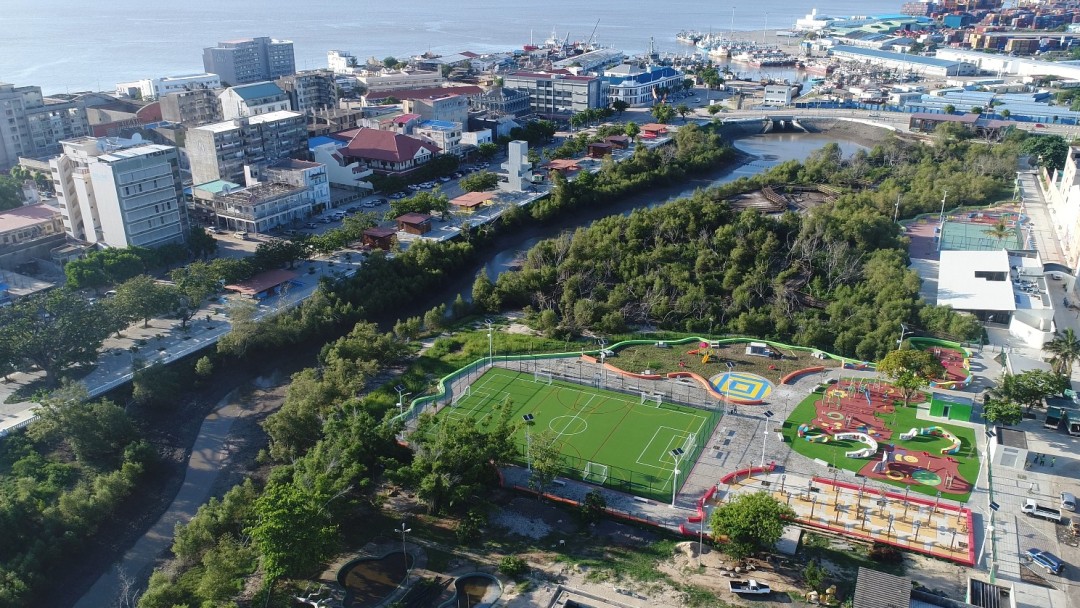
As of: 10/2022
Cyclones, droughts, floods, severe coastal erosion – Mozambique is one of the countries in Africa hardest hit by climate change. However, the extent to which people are directly affected by the consequences is highly dependent on their social and economic situation. In Beira, for example, a port city in the middle of the country, it is mainly the poor and very poor living in the city centre who notice how rising water takes away their living space: lying very low, this part of the city is constantly threatened by flooding. A new public park along a rehabilitated river, reforested mangrove forests and a new urban park administration are intended to help improve the living situation of poor residents in particular. The modern fishing harbour, which is now easier to reach via a newly built road, will provide more jobs and thus more income.
The effects of climate change, which can already be clearly felt in Mozambique, are likely to intensify in the future. This is particularly true in the coastal city of Beira, where rising sea levels, spring tides and heavy rainfall regularly cause flooding. In spring 2019, Cyclone Idai struck the city and caused extensive damage.
With a population of half a million, Beira is Mozambique’s fourth largest city with one of the country’s most important ports. But the topographical conditions are tricky: parts of the city centre are below or only just above sea level and are constantly at risk of flooding. Many of the districts around the city centre are informal communities. A lot of people live in close proximity to each other here, and the poverty rate is high.
The urban infrastructure is completely inadequate. Drainage channels and sanitary facilities are lacking in particular. This makes these communities particularly vulnerable to the effects of extreme weather conditions.

The Green Urban Infrastructure project in the municipality of Beira aims to contribute to better living conditions for the city’s population, especially for poor and very poor people in the informal settlement of Goto. The essence of the project is to ensure the sustainable and efficient operation of an urban park along the Chiveve River.
In the rehabilitation phase that lasted until 2017, the riverbed was first dredged and the shoreline cleared of waste and sediments. Thanks to these measures, the river’s water can flow better again. At the mouth of the river, a newly built tidal outlet also regulates the river’s flow to protect the city centre from flooding caused by heavy rain and flood waves. The facility is operated by the municipal wastewater utility.
The fishing port, which plays an important role in Beira’s economy, was subject to deep dredging as well to ensure that the harbour stays accessible regardless of the tides. In addition, a new road was built so that the port is also easier to reach from land – this is important for creating more jobs.
In the second phase, completed in 2021, a public park was created along the river. It is intended to permanently maintain the function of the site as a catchment and overflow area in case of flooding. The park features playgrounds, sports facilities as well as a botanical garden, an open-air theatre and an event space. There is also a market, restaurant, kiosks, sanitary facilities and walkway lighting. Several new bridges now better connect the city centre with the river valley. There are also many paths in the park, as well as a cycle path around five and a half kilometres long.
The construction work was postponed by Cyclone Idai, which damaged the new infrastructure in March 2019. The river’s drainage system and damage to the mangrove forest ecosystem had to be repaired as a result. KfW made additional funds available to this end. Up until the end of 2023, it will also promote urban management in the sustainable operation of the park.
The project achieved impacts in two areas. Firstly, the risk of flooding in the city has been significantly reduced. This provides a better framework for economic development. Secondly, the flood protection area has created new green areas. The new park provides economic, social and cultural opportunities for the urban population and is at the same time an important recreational area right in the middle of the city centre, which is at high risk of flooding. The new green infrastructure not only improves the living conditions of local residents, the park enables them to participate more in public life.
This is because many cultural, social and sporting events are held there to encourage people in the city to make the park their own and promote its sustainable use. During these events, visitors are called on to participate in decisions that affect the park – for example, when deciding which logo the park should use in the future.
Being involved in these processes not only strengthens the extent to which people identify with “their” park. The new recreation area also creates more jobs and generates additional income for the city. This in turn strengthens the reputation and role of the Beira municipality as an effective service provider for city residents. To ensure the sustainability of the park, an independent municipal park administration was also set up as an accompanying measure – equally funded by German financial cooperation. In the first four years of the park’s development phase, for example, it was used to finance training on subjects such as park management or urban planning. In addition, the park administration is being trained in how to generate additional income through public-private partnerships.
The project contributes to the achievement of these following United Nations Sustainable Development Goals:
KfW Group
KfW Development Bank
Governance and natural resource conservation
KfW Office Maputo
Share page
To share the content of this page with your network, click on one of the icons below.
Note on data protection: When you share content, your personal data is transferred to the selected network.
Data protection
Alternatively, you can also copy the short link: https://www.kfw-entwicklungsbank.de/s/enzBYz_L
Copy link Link copied